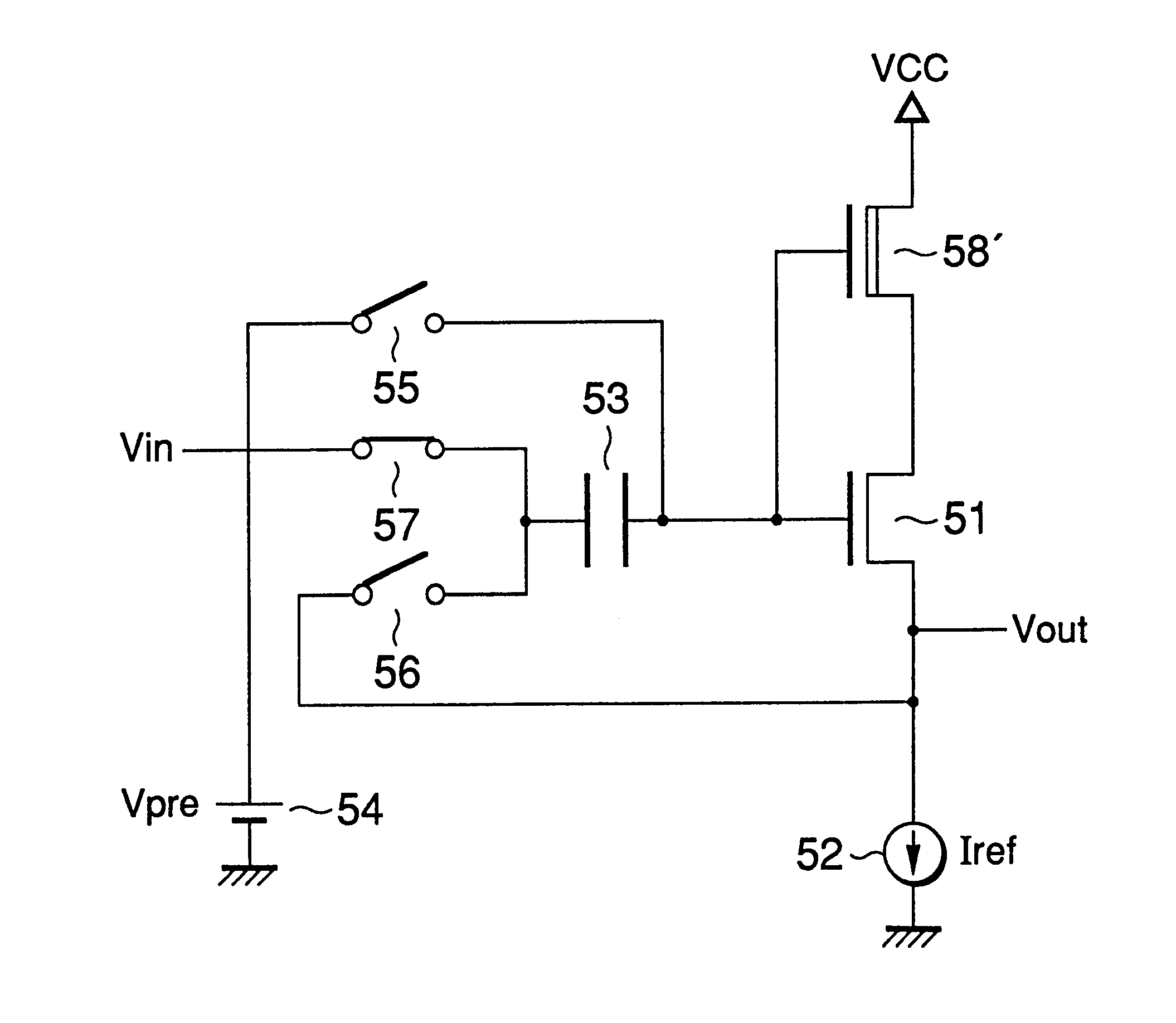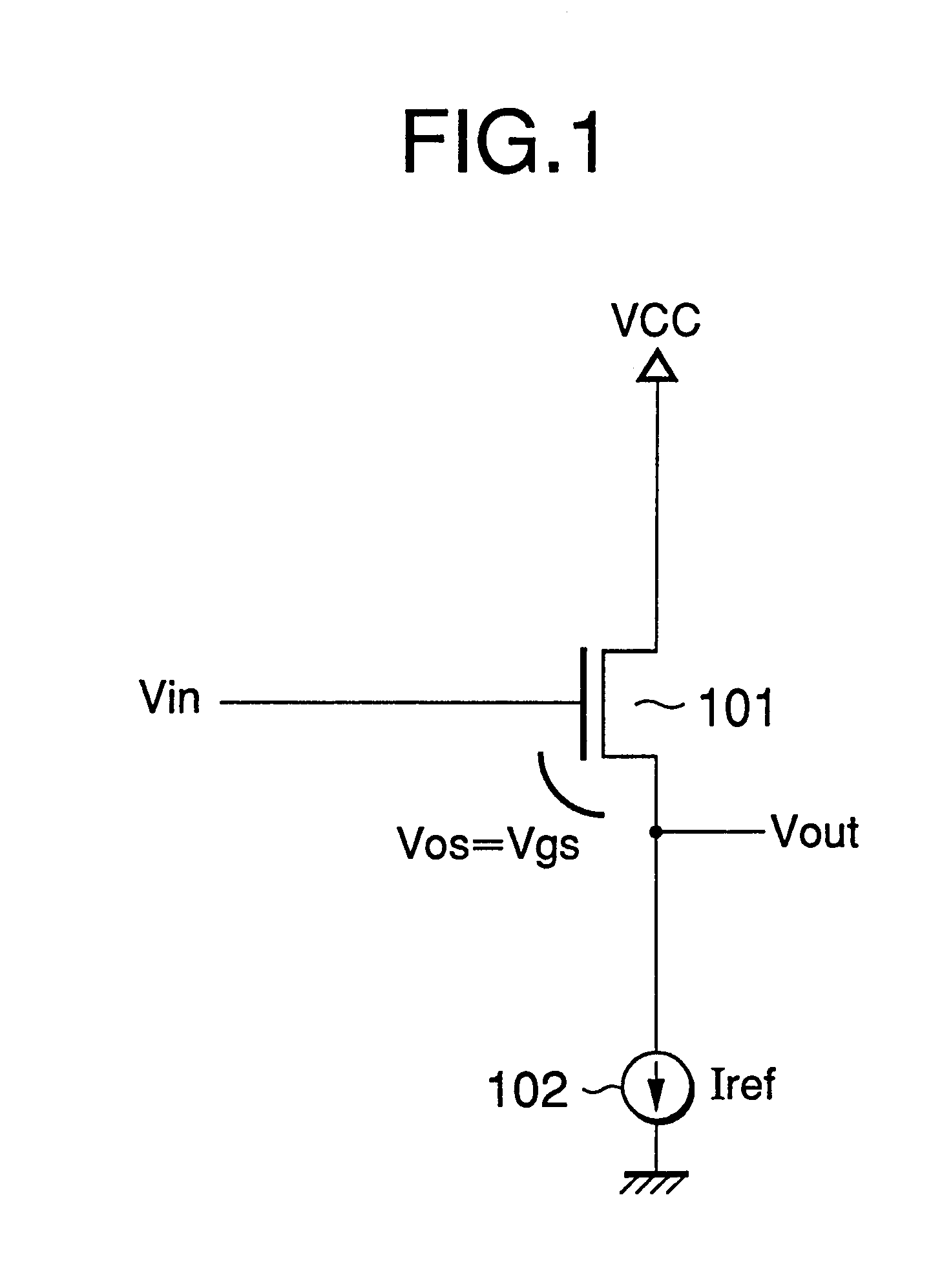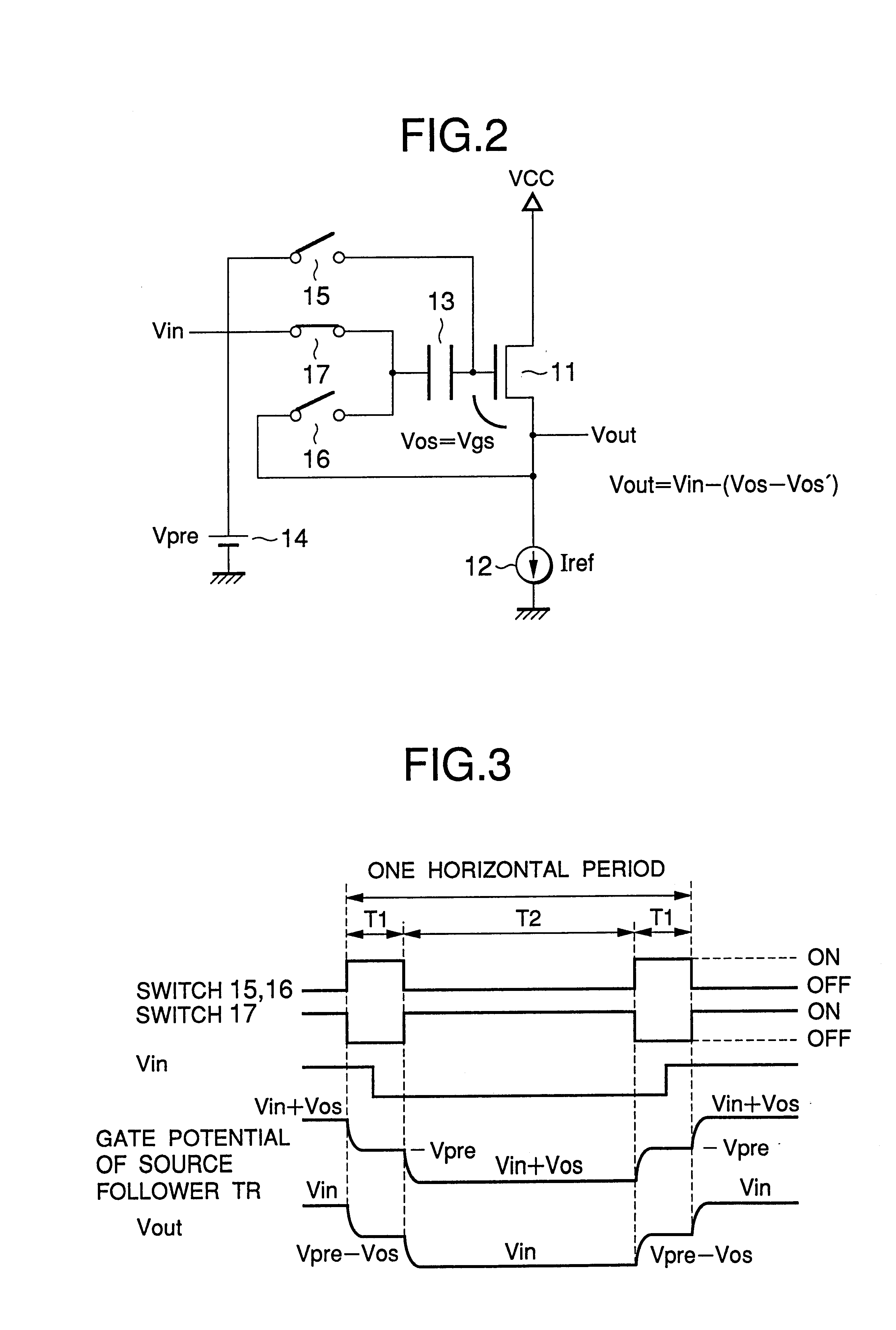Liquid crystal display device
a display device and liquid crystal technology, applied in logic circuit coupling/interface arrangement, amplifiers with impedence circuits, instruments, etc., can solve the problems of large variations difficulty in integrally forming liquid crystal panels and driver circuits thereof with polysilicon, and difficulty in forming voltage follower circuits with polysilicon, etc., to achieve sufficient reduction of the variation in output potential between the circuits, the effect of large variation in characteristics and precise offset cancelling
- Summary
- Abstract
- Description
- Claims
- Application Information
AI Technical Summary
Benefits of technology
Problems solved by technology
Method used
Image
Examples
first embodiment
In the first embodiment in FIG. 2, a source follower circuit has an NMOS source follower transistor 11 connected to a power supply VCC with the drain thereof and a current source 12 connected across the source of the source follower transistor 11 and earth. The gate of the source follower transistor 11 is connected to one end of a capacitor 13. The first analog switch 15 is connected across the gate of the source follower transistor 11 and a precharge supply 14. The second analog switch 16 is connected across the other end of the capacitor 13 and the source of the source follower transistor 11. The third analog switch 17 is connected across the other end of the capacitor 13 and a signal source (Vin).
The first analog switch 15 and the second analog switch 16 are simultaneously operated, i.e. turned on (closed) and off (open) in the same periods. The third analog switch 17 is operated in reverse with respect to the opening and closing of the first and second analog switches 15 and 16....
second embodiment
In this second embodiment, however, the gate-drain voltage Vgd of the source follower transistor 51 can be kept substantially fixed even in the precharge period as well as in the output period for outputting an arbitrary signal by cascode connecting the NMOS transistor 58 to the drain side of the source follower transistor 51 and connecting the PMOS source follower transistor 59 across the gate of the source follower transistor 51 and the gate of the cascode connected transistor 58.
This is because the drain voltage Vd of the source follower transistor 51 is a function of the gate voltage Vg, the gate-source voltage Vgs58 of the cascode connected transistor 58 and the gate-source voltage Vgs59 of the source follower transistor 59 which can be expressed as
and the drain voltage Vd of the source follower transistor 51 therefore changes in response to the change in the gate voltage Vg thereof.
Compared with the circuit configuration of the first embodiment, fluctuations in the drain volta...
PUM
| Property | Measurement | Unit |
|---|---|---|
| conduction type | aaaaa | aaaaa |
| conduction | aaaaa | aaaaa |
| reference voltage | aaaaa | aaaaa |
Abstract
Description
Claims
Application Information
 Login to View More
Login to View More - R&D
- Intellectual Property
- Life Sciences
- Materials
- Tech Scout
- Unparalleled Data Quality
- Higher Quality Content
- 60% Fewer Hallucinations
Browse by: Latest US Patents, China's latest patents, Technical Efficacy Thesaurus, Application Domain, Technology Topic, Popular Technical Reports.
© 2025 PatSnap. All rights reserved.Legal|Privacy policy|Modern Slavery Act Transparency Statement|Sitemap|About US| Contact US: help@patsnap.com



